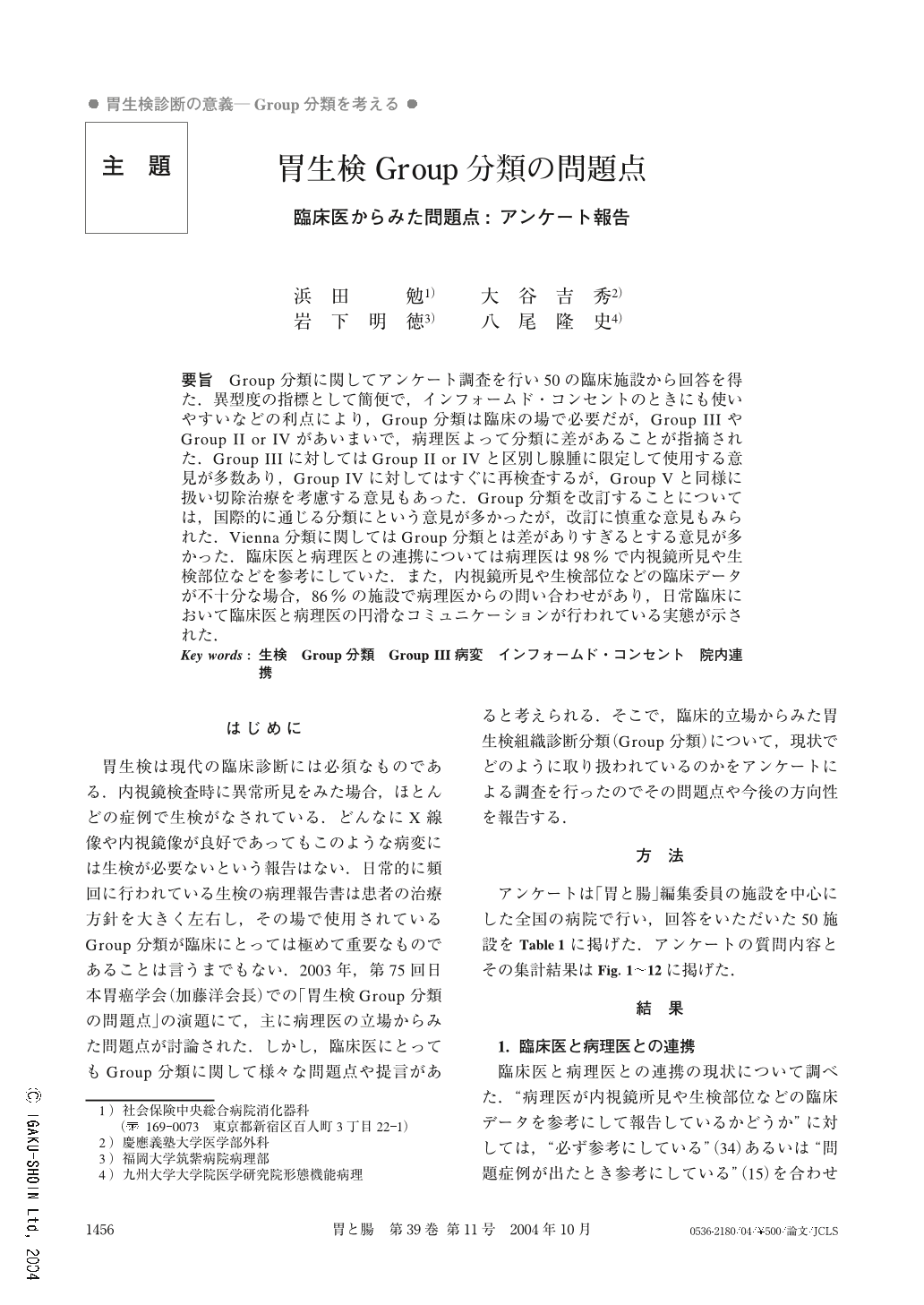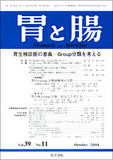Japanese
English
- 有料閲覧
- Abstract 文献概要
- 1ページ目 Look Inside
- 参考文献 Reference
- サイト内被引用 Cited by
要旨 Group分類に関してアンケート調査を行い50の臨床施設から回答を得た.異型度の指標として簡便で,インフォームド・コンセントのときにも使いやすいなどの利点により,Group分類は臨床の場で必要だが,Group IIIやGroup II or IVがあいまいで,病理医よって分類に差があることが指摘された.Group IIIに対してはGroup II or IVと区別し腺腫に限定して使用する意見が多数あり,Group IVに対してはすぐに再検査するが,Group Vと同様に扱い切除治療を考慮する意見もあった.Group分類を改訂することについては,国際的に通じる分類にという意見が多かったが,改訂に慎重な意見もみられた.Vienna分類に関してはGroup分類とは差がありすぎるとする意見が多かった.臨床医と病理医との連携については病理医は98%で内視鏡所見や生検部位などを参考にしていた.また,内視鏡所見や生検部位などの臨床データが不十分な場合,86%の施設で病理医からの問い合わせがあり,日常臨床において臨床医と病理医の円滑なコミュニケーションが行われている実態が示された.
A questionnaire survey concerning Group Classification (GC) for gastric biopsy specimens was responded to by fifty medical hospitals. The results of the questionnaire were as follows. GC was very useful to indicate the degree of atypism and it made it easy to get informed consent for medical care. On the other hand, a difference of opinion about GC by pathologists was noticed mostly concerning the diagnosis of Group II or IV, and Group III should be qualified only for gastric adenoma. Revision of GC in accord with international standard was supported by a large majority but there is a gap between the Vienna Classification and GC.
98% out of pathologists referred to the clinical findings when they made a diagnosis, so it is important to keep smooth communication between clinicians and pathologists.
1) Department of Gastroenterology, Social Health Insurance Medical Center, Tokyo
2) Department of Sargery, Keio University School of Medicine, Tokyo
3) Department of Pathology, Fukuoka University Chikushi Hospital, Chikushino, Japan
4) Department of Anatomic Pathology, Graduate School of Medical Science, Kyushu University, Fukuoka, Japan

Copyright © 2004, Igaku-Shoin Ltd. All rights reserved.


